No products in the cart.
Retired
SBC66ECL - SBC with Ethernet and USB - Retired
Availability:
Out of stock
SKU: CSC0-414Code: SBC66ECL
US$ 34.76
Out of stock
SBC66ECL Board
This product has been retired. DO NOT use for new designs. It is NO LONGER available.
The SBC66ECL is a Single Board Computer (SBC) with a 10/100 Mbit/sec Ethernet and a micro USB port. It is supplied programmed with a USB Bootloader(for upgrading Firmware) and Webserver(firmware) installed. The Webserver firmware uses the TCP/IP and USB stack from the Microchip Application Library. It has a web interface for monitoring, controlling and configuring the board. This functionality will be extended in future releases. The USB port is mostly used for debugging, sending commands and requesting information. The TCP/IP stack supports the following protocols:
- ARP, IP, ICMP, UDP, TCP, DHCP, SNMP, HTTP, FTP, TFTP
- Socket support for TCP and UDP
- Secure Sockets Layer (SSL)
- NetBIOS Name Service
- DNS Domain Name System
- Ethernet Device Discovery
It implements DHCP and NetBIOS, which makes it very easy to access on a network - no configuration of static IP addresses are required! When connected to a network with a DHCP server, it will automatically be assigned an IP address. If no DHCP server is present, the board will be assigned it's default IP address. The default IP address and NetBIOS name is 10.1.0.1 and "mchpboard", and can be changed via the web interface. To access the board on a network with DHCP enabled, the NetBIOS name or assigned IP address (have to get that from DHCP server) can be used. For example, with the default NetBIOS name, the board's web interface can be viewed in a browser by using the following address: http://mchpboard On a network without DHCP, the default IP address can be used: http://10.1.0.1
The web pages are stored in an on-board 4MByte FLASH. All source code for the default web pages, and example web pages are provided. Custom pages can easily be created by modifying the default or example web pages. Web pages can be uploaded in many different ways, including the web interface(using a standard browser), command line script file, or the Microchip MPFS2 Utility. Click here for details.
The SBC66ECL can be used as is, or as a daughter board on a custom designed main board. The PT66EI-24P is an example of a board that takes the SBC66ECL as a daughter board. When used as a daughter board, it can also supply the main board with a couple of 100mA of 3.3V and 5V power.
Details
It is assembled with the PIC24FJ128GB106 microcontroller, which has 128KBytes FLASH and 16KBytes SRAM. Additionally this board has 32MBit (4MByte) external FLASH and 64KBit external EEPROM.
The PIC24F Microcontroller used has a very nice feature called Peripheral Pin Select (PPS). This is a great feature, and very well suited for a general purpose SBC board like this. With this feature, peripherals on the CPU can be routed to any one of the "Peripheral" I/O port pins. For example, the PIC has 4 USART's, which can now all be routed to the I/O pins of the daughter board connector if required. This would make it possible designing a main board with 4 RS-232 or RS-485 ports by using the SBC66ECL as a plug in daughter board. Other peripherals available via the PPS feature are 9 PWM modules (Analog outputs), 3 SPI ports, 4 external interrupts, 9 input capture, 5 external timer sources, and 3 comparator outputs.
There are plenty of Digital Inputs, Digital Outputs, Analog Inputs, PWMs and more available via two daughter board connectors and a 10 pin FFC connectors.
The SBC66ECL can be powered via USB, or an external 5V DC supply(via 2.1mm power connector). It is a 5V/3.3V dual voltage board (has a on-board 3.3V regulator), making it easy to interface with both 3.3V and 5.0V devices. All chips on the board are 3.3V, but most of the microcontroller's I/O pins are 5.0V tolerant, allowing it to interface with 5.0V devices. Eight ports can also be configured to have 5V digital outputs. A linear regulator is used for the 3.3V supply. This double power supply scheme (external 5V regulator, feeding on-board 3.3V regulator), ensures the CPU and analog supply is clean and has low noise.
This board is assembled with very high quality, brand name components! Our goal is for this board to work error free for many years. For this reason, we do not use cheap components, or stress components to the limit of their capability! The quality of assembly, and reliability of components used sets this board apart from similar competitor products!
Features
- Assembled with the Microchip PIC24FJ128GB106 Microcontroller
- 10/100 MBit/sec Ethernet port
- USB port via Micro B USB connector. Can also power board
- 128KBytes internal FLASH memory for program and constant data
- 16KBytes Bytes of internal SRAM
- 16 MIP Microcontroller execution speed
- External 32MBit (4Mbytes) SPI FLASH
- External 8Kbyte SPI EEPROM
- 4 USARTS (RS-232, RS-485, LIN Bus...), that can be routed (via Microchip's Peripheral Pin Select feature) to any of 18 user I/O Ports
- 2 SPI Ports, that can be routed (via Microchip's Peripheral Pin Select feature) to any of 18 user I/O Ports
- 9 PWM Modules, that can be routed (via Microchip's Peripheral Pin Select feature) to any of 18 user I/O Ports
- 2 I2C ports
- 26 Digital 3.3V User I/O ports, of which 8 have on board 5V pull-up resistors to allow them to be used with 5V logic
- 11 of the I/O ports can be configured as 10-bit Analog Inputs (0 to 3.3V).
- 2.5V high precision external voltage reference for ADC converter
- Very High quality assembly, with brand name, quality components. No cheap, “no name brand” components are used!
- 3.3V Linear Regulator (Texas Instruments, ST or ON Semiconductors brand), with very high quality, brand name capacitors!
- Filtered analog supply to CPU for accurate analog measurements
- Daughter board connector with 20 pins for adding prototype, I/O or user expansion boards
- 10 pin FFC (Flat Flexible Cable) connectors with power and 8 I/O port. Uses standard 10 pin, 1.0mm spacing FFC cable
- Micro Match connector for connecting a serial I2C device (5V or 3.3V configurable), like the LCD2S serial LCD display with keypad decoder.
- Red System LED
- Shielded RJ45 network connector with link and activity LEDs
- Pin header with jumper that can be mounted in 3 positions: Park, "C" or "F". Software can determine what position jumper is in, and for example use "C" position to restore default configuration, and "F" position to update firmware via bootloader.
- 2.1mm power connector for 5V external supply.
- Very low supply current of about 100mA at 5V.
- Has an ICSP (In Circuit Serial Programming) connector (ICPC1 type) - CPU can be programmed in circuit. For details see Programming Netcruzer boards
- Free fully functional MPLAB XC16 C Compiler available from www.microchip.com
- Wide operating temperature of -40 to 85°C.
- RoHS Compliant, Lead Free
User Manual, Schematics and Board Revision
For the user manual, including schematics, click here.
The current board is hardware Revision 2. For details of differences between revisions, click here.
Modifying and Upgrading the Firmware
The latest, pre-built firmware is available here, and can be upgraded via the Netcruzer USB Bootloader or the Web interface.
Alternatively the source code can be downloaded, modified, and used to update the board. The SBC66ECL is supplied programmed with two completely independant programs, the USB Bootloader(for upgrading Firmware) and Webserver(actual firmware). The USB Bootloader is used to upgrade the Firmware via USB, and would normally not be modified. The Webserver is the default firmware at delivery, and can be replaced with any other program. Full source code for the USB Bootloader and Webserver is located in the "../src/common_proj" folder of the Netcruzer Download. All code is written in C, and can be edited, programmed and debugged with the MPLAB X IDE, and compiled with the MPLAB XC16 C Compiler. For information on modifying projects click here.
The USB Bootloader allows the firmware to be upgraded via the Netcruzer USB Bootloader application. Additionally firmware and webpages can also be updated via the Web Interface.
The Webserver ships with Default Web Pages, written in standard HTML and JavaScript. Full source code is available in the ".../src/common_proj/webserver/WebPages/Default" folder of the Netcruzer Download. Web pages can be edited with any text editor, and uploaded to board as described here. The Webserver uses the TCP/IP and USB stack from the Microchip Application Library, which has a very rich feature set (Web Server, DHCP, Email, SNMP, Dynamic DNS...).
Package Includes
1 x Item as described above
| Weight | 50 g |
|---|
Based on 0 reviews
Be the first to review “SBC66ECL - SBC with Ethernet and USB - Retired”
You must be logged in to post a review.
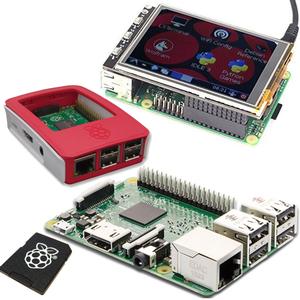

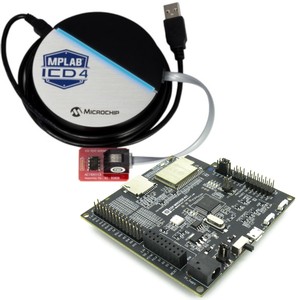
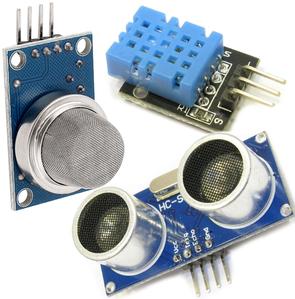
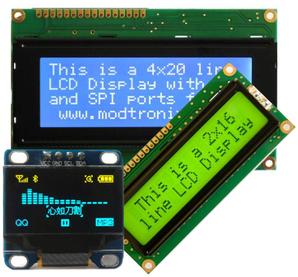
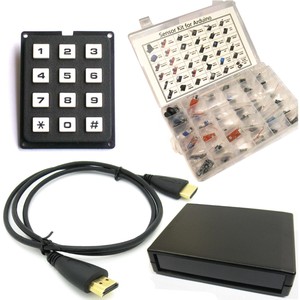
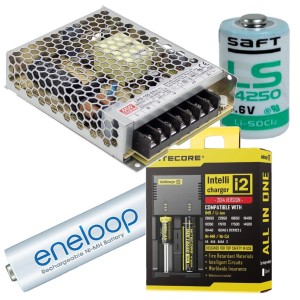
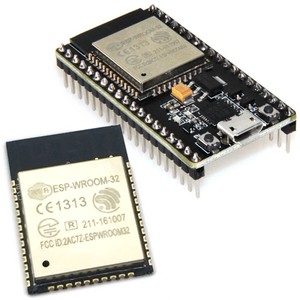


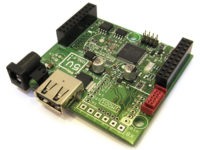
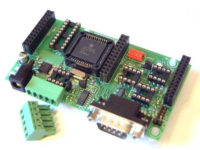
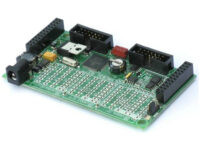
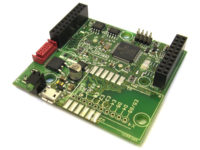
There are no reviews yet.